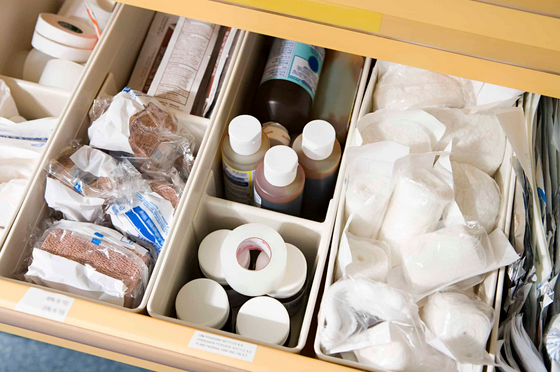"The Evolution of Medical Supplies: A Historical Perspective"
Advances in technology have changed almost every aspect of our lives, with the medical industry being no exception. Technology has revolutionized the manufacturing, distribution and usage of medical supplies. From connected devices and wearable technologies to 3D printing and nanotechnology, there's undoubtedly that innovative technologies are shaping the continuing future of healthcare. Medical supplies are becoming more accessible, affordable, and effective thanks to these technological advancements. This blog post explores the role of technology in advancing medical supplies and how it is transforming healthcare.

3D Printing: 3D printing is really a revolutionary technology that's impacted various industries around the globe, including healthcare. This technology involves the creation of three-dimensional solid objects using digital models. In the healthcare industry, 3D printing is now getting used to print medical supplies such as for example prosthetics, implants, and orthotics. With 3D printing, medical suppliers is now able to create customized and unique products that meet the needs of individual patients. This enables medical professionals to provide better quality healthcare, considering the range of patients'needs that may be catered for.
Artificial Intelligence: Artificial intelligence (AI) refers to computer systems that may perform tasks generally requiring human intelligence, such as for example speech recognition, decision-making, and language translation. AI happens to be being integrated into medical supplies to enhance the potency of these supplies. For instance, AI can help monitor patients'health, enabling doctors to produce informed decisions centered on accurate data gathering. This means that AI is improving the accuracy, speed, and safety of medical supplies, making healthcare easier for doctors, nurses, and patients.
Wearable Technology: Wearable technology has been taking the world by storm in recent years. In healthcare, wearable technology such as smartwatches, fitness trackers, and other gadgets can monitor biomarkers such as for example heartbeat, respiration rate, and blood glucose level, among others. This improves the grade of healthcare since doctors and patients could make informed decisions based on real-time data. We've seen a rise in wearable technology such as for instance technologies that could even help diagnose diseases.
Nanotechnology: Nanotechnology involves the manipulation of matter at the molecular and atomic level. In the healthcare industry, nanotechnology has been used to develop advanced medical products such as for example drug delivery systems, wound dressings, and diagnostic tools. Since it operates at the microscopic level, nanotechnology might help medical supplies work more efficiently. Like, medical equipment are now able to be produced stronger with the usage of nanomaterials that raise the life span of the product. Nanotechnology is revolutionizing healthcare by providing improved efficiency and less expensive for money.
Virtual Reality: Virtual reality (VR) technology gets the potential to alter the healthcare industry by creating immersive and interactive training programs that may improve clinical skills and reduce training costs. Additionally it offers a new way of delivering therapy to patients, especially individuals with mental health conditions. Medical students can now learn complex procedures by utilizing VR systems that simulate real-life situations. Similarly, patients can undergo cognitive behavioral therapy (CBT) for various conditions using VR platforms. This technology is innovative and gets the potential to transform the way in which healthcare is delivered.

Conclusion:
The role of technology in advancing medical supplies cannot be ignored. Innovative technologies such as for instance wearable devices, nanotechnology, artificial intelligence, 3D printing, and virtual reality are transforming the healthcare industry. Technology is making medical supplies more accessible, affordable, and effective. The utilization of technology improves the grade of healthcare in many ways such as for example increasing the accuracy and effectiveness of medical supplies, improving the quality of care provided to patients, and making treatments less invasive. As technology continues to evolve, the options for the advancement of medical supplies are endless. There's without doubt that technology will continue steadily to play a critical role in the healthcare industry.
kindly visit the website at https://artikmed.com/ to get the more info about Medical Supplies.
